#098 Do These 3 Things to Protect Your Brain
May 4th, 2015 by Dr. John DayPodcast: Play in new window | Download
Subscribe: RSS
Do These 3 Things to Protect Your Brain
Cindy could not remember where she put her keys. The night before she forgot the name of someone she knew. When she shared these experiences with her friends over lunch they all laughed it off as “senior moments.”
Was it really a senior moment? Cindy is just 55. Could her forgetfulness be a sign of early dementia?
What is normal brain aging and what is early dementia? How can you tell?
In this article, I will share with you the recent three recommendations from the Institute of Medicine on how to protect your brain from aging. When it comes to brain health and preventing dementia, it is never too late to start. Even if you are still in your 20s or 30s, now is the time to protect your brain!
Why Does Brain Health Matter?
The key factor determining your ability to live an independent, meaningful life is your cognitive function. Is it any wonder that in the 2015 survey of retired people, the top concern of 93% of people was staying mentally sharp.
The problem is how do you protect your brain? When further asked in this survey, most retired people felt that brain games (crossword puzzles, sudoku, etc.) were the key to healthy brain function. Few had any idea that physical activity played a role in brain health.
Brain Puzzles Don’t Protect Your Brain
Contrary to conventional wisdom, crossword puzzles or sudoku generally do not protect your brain. Yes, it is true your brain is stimulated when you first start doing crossword puzzles or sudoku but this is quickly lost once you have developed some degree of proficiency.
In other words, crosswords and sudoku only make you better at doing crosswords and sudoku. To stimulate the brain, you need a lifetime of always learning new things.
In a fascinating study, Dr. Richard Haier wanted to study the effects of brain puzzles on cognitive function. To test this concept, he selected study subjects who had no interest in video games. Specifically, he wanted to know what would be the effect of learning Tetris on brain function.
Sure enough, as people first started playing this new game Dr. Hairer and researchers witnessed tremendous brain stimulation. For example, by scanning these study participants’ brains with a functional MRI scanner, they saw areas of the brain light up like a Christmas tree as these people struggled to learn how to play Tetris. New brain connections were being formed and the brain was alive and stimulated.
However, just as they were starting to get good at Tetris something totally unexpected happened. The brain started shutting down. In other words, brain stimulation only occurred while they were learning something new.
To keep new brain connections forming, we must continually find new things to learn. Doing crosswords or sudoku day after day will only numb the brain like Tetris did in this study. You may be a crossword or sudoko pro but yet still forget someone’s name or items you needed to purchase at the grocery store.
Do These 3 Things to Protect Your Brain
If crosswords and sudoku won’t protect your brain, what should you do to keep your brain functioning at peak performance? According to the report from the Institute of Medicine, these are the three most important things to do to protect your brain. If you want to access this information yourself, here is the link to get your own free 373 page eBook report on Cognitive Aging from the Institute of Medicine.
1. Physical Activity
Since the 1970s it has been recognized that people who regularly exercise have better cognitive function that those who choose not to. Indeed, a recently published study, looking at the combined results of 47 previous studies on this topic, showed that people, age 40 and older, who exercise have 35% better brain function with aging. In other words, if you are 40 or older, you are at high risk of losing your brain function and memory if you are not physically active. Not only can you protect what you have but these same studies show that you can actually get “smarter” and remember things even better with daily physical activity.
While researchers still are not completely sure how exercise makes you “smarter” and improves your memory, there are a number of different theories. The most exciting right now is the role of Brain Derived Neurotrophic Factor (BDNF) which I discussed in a previous article. Other theories include increased blood flow to the brain, less depression, improved neurotransmitter release, etc. from exercise.
Current guidelines from the American Heart Association are to get at least 150 minutes of moderate intensity exercise or at least 75 minutes of high intensity exercise each week. Regardless of how exercise benefits the brain, if you want to always stay mentally sharp, put away the crosswords and sudoko and get moving!
2. Improve Your Cardiovascular Health
It has often been said that you are only as old as your arteries. The same things that protect your heart and arteries are the same things that will protect your brain. Below are the goals of the American Heart Association (AHA) when it comes to optimal cardiovascular health.
1. Keep your blood pressure below 120/80 mmHg.
Constantly exposing your heart and brain to high blood pressure over time causes premature aging of these organs. Work with your physician to keep you blood pressure in the ideal range.
When getting blood pressure under control, I have found that lifestyle factors have more of an effect on blood pressure than medications. However, in some cases, medications may still be required even if you are doing everything right. To learn more about how to control blood pressure naturally, here is an article I have written on this subject (blog #12).
2. Stay physically active
As discussed above, the AHA defines physical activity as a minimum of 150 minutes of moderate intensity or 75 minutes of high intensity exercise each week. I would take this a step further. In addition to these minimums, I recommend at least 10,000 steps each day for my patients as well.
3. Keep your total cholesterol below 170 mg/dL.
As with high blood pressure, high cholesterol can also be lowered naturally. For example, rural Chinese and other people eating a traditional plant-based diet, typically have a total cholesterol below 130 mg/dL without any medications. If your cholesterol is high and you want to lower it naturally, here is an article I have written on the subject (blog #9).
4. Eat a healthy diet.
It goes without saying that if you want a healthy heart and brain you must eat a healthy diet. A healthy diet is defined by the AHA as eating 9 servings of fruits and vegetables each day, nuts and legumes on most days, and oily fish at least twice weekly. Salt, unhealthy fats, sugars as well as other simple carbohydrates and red meat should be minimized.
5. Maintain a healthy weight.
Strangely, a large percentage of my patients have no idea what a healthy weight is for them. Most are in shock when I tell them how much they should weigh to be at a healthy weight. It seems like most people just compare themselves to everyone around them. As long as their bodies look similar to everyone else they must be “OK.”
To not be considered overweight or obese you need to have a body mass index (BMI) of 25 or less. While this system is not perfect, countless studies have shown that it works when predicting cardiovascular risk. To see if your BMI is less than 25, click on this link.
6. Never Smoke
Nothing more needs to be said here. To maintain optimal health we need to breathe clean air.
7. Keep fasting blood glucose below 100 mg/dL.
Measuring your blood glucose is something that can easily be done with any standard blood test. While the AHA has focussed on fasting blood glucose, I feel that the hemoglobin A1C is a better marker for diabetes or pre-diabetes. The hemoglobin A1C test measures the amount of sugar attached to your red blood cells and gives you a running 3-month average of your blood glucose. A normal hemoglobin A1C is below 5.7%.
3. Avoid Mind Robbing Medical Conditions and Medications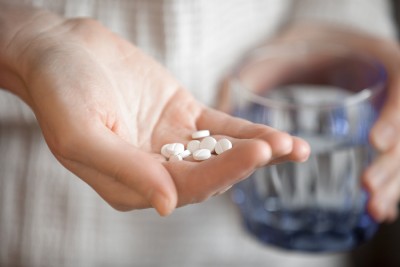
With regards to recommendation number 3, the Institute of Medicine (IOM) recommends that you work with your physician to treat any underlying medical conditions or medications that may cause dementia.
Specifically, the IOM has called out diabetes and sleep apnea as two treatable causes of dementia. Fortunately, for most people, weight loss will cure both of these conditions. However, until you can reverse your diabetes and sleep apnea, work with your physician to make sure both are under excellent control. For diabetes, this means a goal hemoglobin A1C of less than 5.7% and for sleep apnea this means ensuring that you are using CPAP or whatever your physician has prescribed to treat this condition.
Other medical conditions which can caused dementia, such as thyroid disease, stroke, high blood pressure, high cholesterol, obesity, kidney disease, etc. were also called out by the IOM. If you have any of these conditions, work closely with your physician to get these conditions under control.
Medications are another common cause of dementia. In particular, the IOM has targeted sleeping pills, including sedating antihistamines like Benadryl or Tylenol PM, some antidepressants and anti-anxiety medications, narcotics, muscle relaxants, and even medications for urinary incontinence. If you are on any of these medications do not stop them abruptly. Rather, work with your physician to see if there are any less toxic treatment options which don’t put your brain at risk of dementia.
Concluding Thoughts
When I read this report from the Institute of Medicine I became quite alarmed myself as I regularly took Benadryl (diphenhydramine) for about 20 years to help me sleep at night. This is the same medicine that is in Tylenol PM.
Had I known of the long-term risks of this medication, I would never have taken it. Unfortunately, what we have done in the past cannot be changed. We also cannot waste our time worrying about how we used to live. The important thing is to live as healthy as we can now.
What things are your doing to protect your brain?





















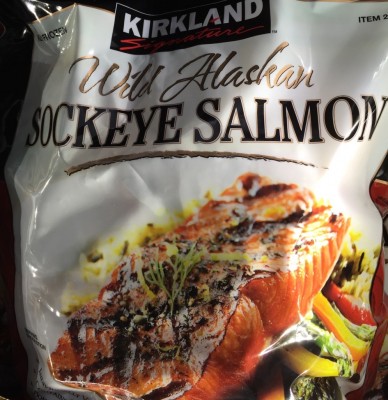
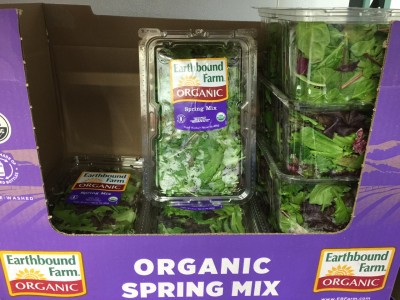
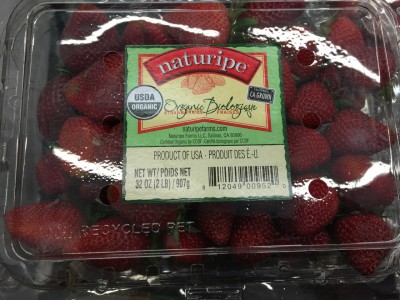







 hey also wanted to understand what were the most important factors to successfully maintaining a healthy weight.
hey also wanted to understand what were the most important factors to successfully maintaining a healthy weight. I realize that in our hectic lives it can be very difficult to carve out an hour each day to exercise. For me, this is why I use my treadmill and bike desks everyday (see photos). This allows me to multitask so that I can both maintain a healthy weight and get my work done simultaneously.
I realize that in our hectic lives it can be very difficult to carve out an hour each day to exercise. For me, this is why I use my treadmill and bike desks everyday (see photos). This allows me to multitask so that I can both maintain a healthy weight and get my work done simultaneously.







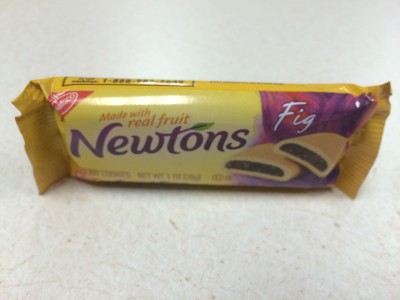



 adopts her.”
adopts her.”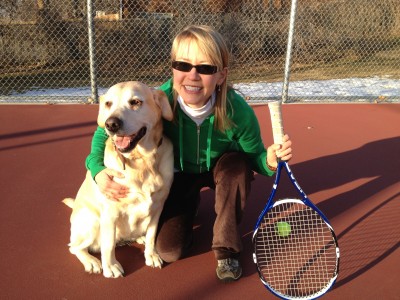 What are the lessons of this story?
What are the lessons of this story?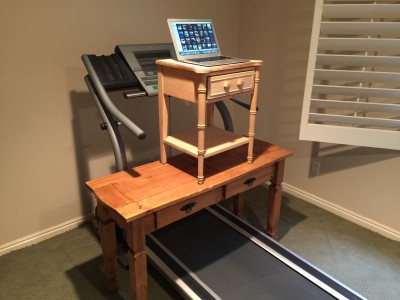 For me, I need time to write articles like this or the book we are working on with Harper Collins. To help me meet all of my needs, I have a treadmill desk as well as a bike desk in an unused room of our basement as seen here.
For me, I need time to write articles like this or the book we are working on with Harper Collins. To help me meet all of my needs, I have a treadmill desk as well as a bike desk in an unused room of our basement as seen here.